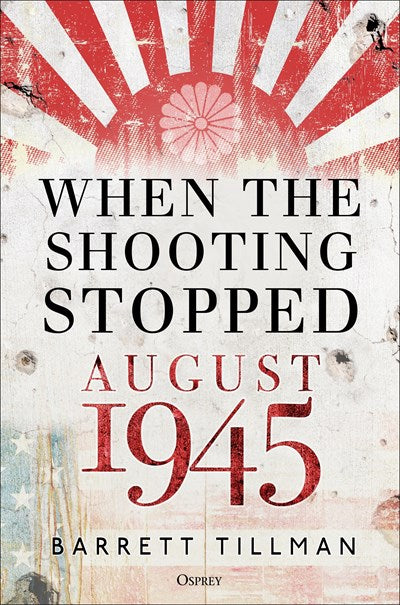Victory in Japan Day on August 15, 1945 officially marked the end of World War II, but conflicts continued throughout the month. This fascinating title explores the final weeks of the war.
In forty-four months between December 1941 and August 1945, the Pacific Theater of Operations absorbed the attention of the American nation and military longer than any other. Despite the Allied grand strategy of “Germany first,” after the Japanese attack on Pearl Harbor, the U.S. especially was committed to confronting Tokyo as a matter of urgent priority.
But from Oaho to Tokyo was a long, sanguinary slog, averaging an advance of just three miles per day. The U.S. human toll paid on that road reached some 108,000 battle deaths, more than one-third the U.S. wartime total. But by the summer of 1945 on both the American Homefront and on the frontline there was hope. The stunning announcements of atomic bombs on Hiroshima and Nagasaki on August 6 and 9 seemed sure to force Tokyo over the tipping point since the Allies’ surrender demand from Potsdam, Germany, in July. What few understood was the vast gap in the cultural ethos of East and West at that time. In fact, most of the Japanese cabinet refused to surrender and vicious dogfights were still waged in the skies above Japan.
Amidst the devastation of the nuclear bombings came the news of the Soviet invasion of Japanese-held Manchuria. Barrett Tillman details how it was this total abandonment of the previous peaceful relations between Russia and Japan is what ultimately convinced the Japanese emperor to agree to unconditional surrender. His decision was in defiance of many military and political key figures and even in the face of attempted coup. This fascinating new history tells the dramatic story of the final weeks of the war, detailing the last brutal battles on air, land and sea with evocative first-hand accounts from pilots and ordinary sailors caught up in these extraordinary events. Barrett Tillman then expertly details the first weeks of a tenuous peace and the drawing of battle lines with the forthcoming Cold War as Soviet forces concluded their invasion of Manchuria. When the Shooting Stopped retells all these dramatic events drawing on accounts from all sides to relive the days when the war finally ended and the world was forever changed.

